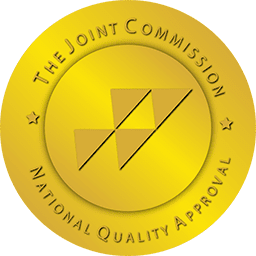Dilaudid abuse or addiction has a lot of physical symptoms that include painful withdrawal and dependence, as with most opioid-based drugs.
Dilaudid is a prescription analgesic used to treat severe or chronic pain. Also known as hydromorphone, Dilaudid belongs to the opioid family and is highly addictive. With a potency of 5 to 7 times that of morphine, Dilaudid will produce habituation and dependence if it is taken for too long or abused.
Dilaudid is a full opioid agonist, meaning it fills the opioid receptors in the brain. This specific neurological binding rapidly suppresses pain while creating a sense of calm, relaxation, and euphoria. It is a short-acting opioid with an onset of 10-15 minutes, which makes the drug particularly useful for users suffering from intense pain that calls for immediate relief.
What is Dilaudid Abuse?
Most people who abuse Dilaudid started taking it for legitimate medical problems. However, because Dilaudid does a good job of relieving severe pain, people rely on it for all pain relief and may take too much of it or take it longer than prescribed. This rapidly reduces its effectiveness, causing a person to increase the amount they take to produce the same level of pain relief.
Unfortunately, Dilaudid use has side effects that can be dangerous, sometimes leading to permanent harm or death. As a person takes more of the drug attempting to duplicate its original effectiveness, these side effects worsen, and the individual’s health becomes increasingly impaired.
At this point, a person has opioid use disorder, which typically leads to Dilaudid addiction. Addiction occurs when a person becomes physically and psychologically dependent on a steady level of Dilaudid in their system to function. A person who suffers from addiction will be unable to stop using the substance on their own, even though the outcomes of such substance use are negative.
What Are the Signs of Dilaudid Abuse?
Dilaudid addiction develops rapidly after a person begins abusing it, but a person may continue to keep a job and perform well at home or school in the early stages of Dilaudid abuse. As Dilaudid abuse escalates into addiction, a person will experience serious consequences of their drug abuse yet remain unable to stop using it.
Physical Signs And Symptoms of Dilaudid Abuse
- Mood swings
- Nodding off or problems staying awake
- Itching or scratching
- Poor coordination
- Development of escalating tolerance
- Nausea, vomiting
- Dizziness
Behavioral Signs of Dilaudid Abuse
- Doctor or pharmacy shopping
- Faking prescriptions, drug-seeking behavior
- Lying about Dilaudid abuse and misuse
- Theft of Dilaudid
- Social isolation
- Increased apathy
- Financial problems
- Failing to meet home/work/school commitments
- Legal issues
Dilaudid Withdrawal Symptoms
- Poor appetite
- Stomach cramps
- Nausea
- Vomiting
- Pinpoint pupils
- Headache
- Loss of consciousness
- Constipation when abusing Dilaudid
- Diarrhea when withdrawing from Dilaudid
- Elevated anxiety
- Slow, shallow breathing
- Dry mouth
- Rash
- Blood pressure changes
- Seizures
Hydromorphone abuse may lead to a person becoming addicted to heroin. Heroin is easier to get than Dilaudid, and addicts often start using it after they no longer have access to Dilaudid legally.
Treatment for Dilaudid Addiction and Opioid Abuse
Long-term opioid addiction can lead to serious and persistent physical and psychological health issues. As well, it’s easy for a person to overdose on opioids. Unfortunately, many people die every year from such overdoses.
The good news is that Dilaudid abuse and addiction are highly treatable. If you or someone you love is struggling with Dilaudid addiction, our addiction specialists can assist you around the clock.
Absolute Awakenings follows an evidence-based approach to treating substance abuse disorders. We are committed to providing long-term recovery for those struggling with addiction. Recovery is not a one-size-fits-all approach, so every person that walks through our doors is provided with a unique and individualized experience. Our recovery specialists are waiting to assist you, so call us today for more information.
References
- Abi-Aad KR, Derian A. Hydromorphone. In: StatPearls. StatPearls Publishing; 2022. Accessed January 16, 2023. http://www.ncbi.nlm.nih.gov/books/NBK470393/
- Lowe A, Hamilton M, Greenall BScPhm MHSc J, Ma J, Dhalla I, Persaud N. Fatal overdoses involving hydromorphone and morphine among inpatients: a case series. CMAJ Open. 2017;5(1):E184-E189. doi:10.9778/cmajo.20160013
- Psychiatry.org – Opioid Use Disorder. Accessed January 16, 2023. https://www.psychiatry.org:443/patients-families/opioid-use-disorder













